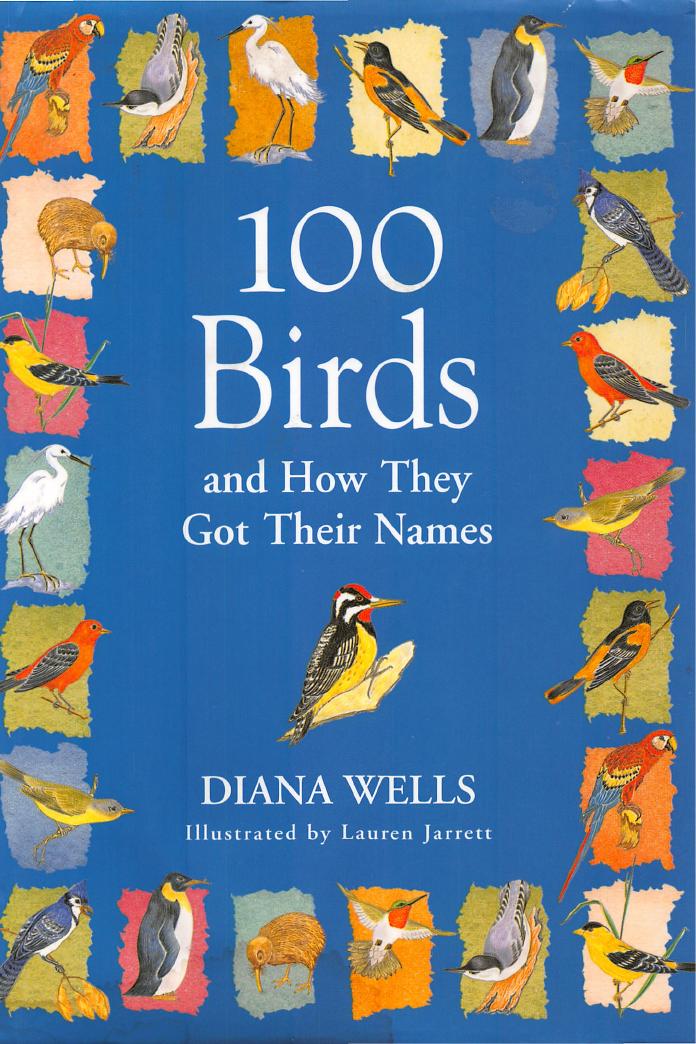100 Birds and How They Got Their Names by Diana Wells

Author:Diana Wells
Language: eng
Format: epub, pdf
Publisher: Algonquin Books
Published: 2002-03-04T16:00:00+00:00
ORIOLE
It was not unusual for ancient medical cures to be associated with color absorption, such as wrapping a patient in a red blanket to take away a fever’s fiery heat. The Old World oriole’s Greek name was ikteros, meaning “jaundice.” Pliny the Elder told of a jaundiced man seeing an oriole that was the color of his ailment. Immediately the man was cured and the bird died.
Early American naturalists, both for nostalgia and because birds were as yet unnamed, were apt to call birds that looked familiar after the ones back home, especially if their habits seemed similar. This is why the bird’s common name, oriole, on both sides of the Atlantic, is from aureolus, Latin for “golden,” even though the birds aren’t related. The Greek name ikteros (or Icterus) also crossed the Atlantic and was applied to the American oriole’s family, the Icteridae (see Blackbird). But the Old World orioles are in the Oriolidae family.
All orioles build beautiful hanging nests, using their feet as well as their bills to construct them. They eat fruit and seeds as well as insects, and some were considered a pest in the Mediterranean because they ate figs.
In spring Baltimore orioles come to the United States from the tropics to breed. They often use man-made materials for their nests, so the ornithologist Alexander Wilson warned women to keep “narrowly watching their thread that may chance to be out bleaching.” The Baltimore oriole’s name, wrote Mark Catesby in his eighteenth-century book Natural History of the Carolinas “comes from the Lord Baltimore’s coat of arms.” The lord was governor of Maryland, and the coat of arms was described as “Paly of six, Topaz and Diamond, a Bend, counterchang’d,” in the same colors as the bird’s plumage.
Orioles were once thought to cure jaundice.
Scott’s oriole, Icterus parisorum, was given its scientific name by Napoleon’s nephew Charles Bonaparte. Parisorum was to honor the Paris brothers, French businessmen who sent natural history specimens from Mexico. General Darius Couch (see Kingbird) gave this oriole its common name for General Winfield Scott, with whom he had campaigned in Mexico. Scott was general in chief of the army until 1861, when he retired. He was nicknamed “Old Fuss and Feathers” (because he was so punctilious) and orioles do migrate to Mexico, but other than these incidentals the man seems to have had no avian connections at all. He doesn’t mention birds in his two-volume autobiography, and unlike his contemporary Emily Dickinson, it appears he really didn’t care if
To hear an Oriole sing
May be a common thing
Or only a divine.
Download
100 Birds and How They Got Their Names by Diana Wells.pdf
This site does not store any files on its server. We only index and link to content provided by other sites. Please contact the content providers to delete copyright contents if any and email us, we'll remove relevant links or contents immediately.
| Amphibians | Animal Behavior & Communication |
| Animal Psychology | Ichthyology |
| Invertebrates | Mammals |
| Ornithology | Primatology |
| Reptiles |
Sapiens: A Brief History of Humankind by Yuval Noah Harari(14258)
The Tidewater Tales by John Barth(12609)
Mastermind: How to Think Like Sherlock Holmes by Maria Konnikova(7234)
Do No Harm Stories of Life, Death and Brain Surgery by Henry Marsh(6891)
The Thirst by Nesbo Jo(6834)
Why We Sleep: Unlocking the Power of Sleep and Dreams by Matthew Walker(6620)
Life 3.0: Being Human in the Age of Artificial Intelligence by Tegmark Max(5479)
Sapiens by Yuval Noah Harari(5297)
The Longevity Diet by Valter Longo(5021)
The Body: A Guide for Occupants by Bill Bryson(4978)
The Rules Do Not Apply by Ariel Levy(4870)
The Immortal Life of Henrietta Lacks by Rebecca Skloot(4528)
Animal Frequency by Melissa Alvarez(4399)
Why We Sleep by Matthew Walker(4364)
The Hacking of the American Mind by Robert H. Lustig(4319)
Yoga Anatomy by Kaminoff Leslie(4310)
All Creatures Great and Small by James Herriot(4237)
Double Down (Diary of a Wimpy Kid Book 11) by Jeff Kinney(4209)
Embedded Programming with Modern C++ Cookbook by Igor Viarheichyk(4111)
